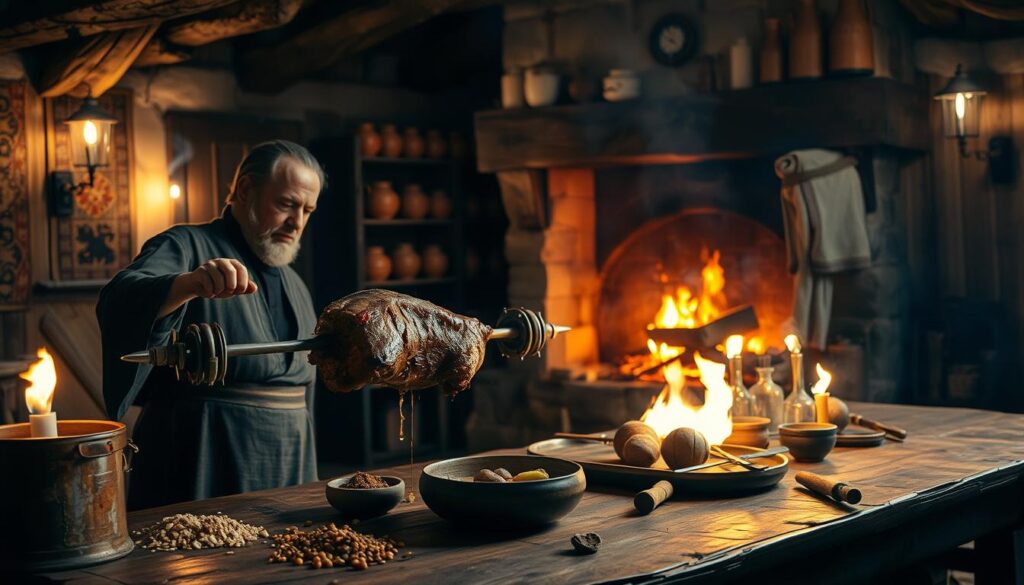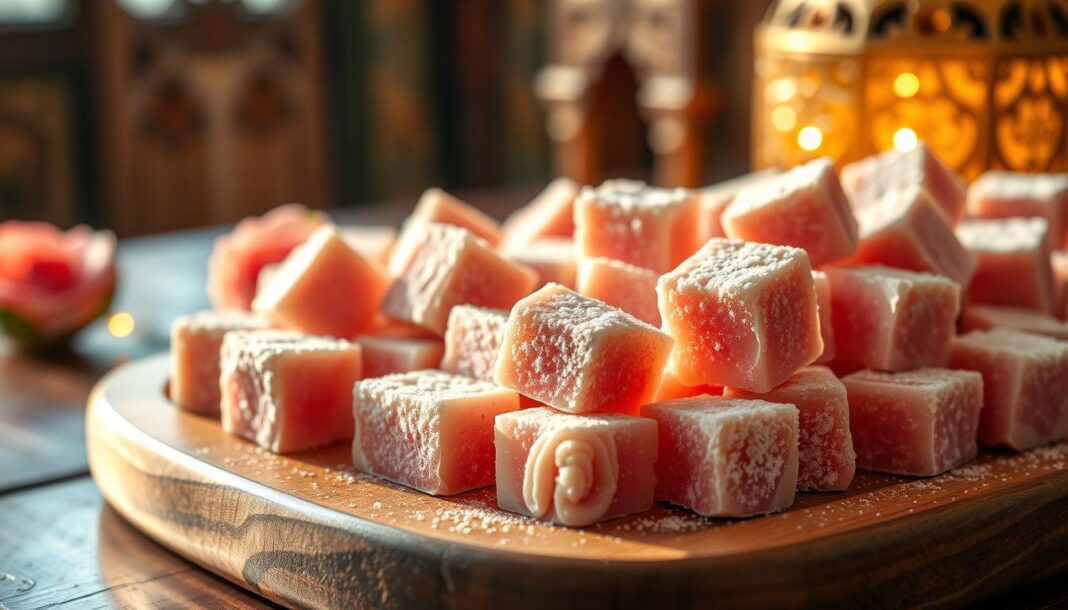As we journey back in time to the Middle Ages, we’re fascinated by the culinary traditions that defined the era. Medieval cuisine was characterized by its reliance on local ingredients and preservation techniques, which significantly influenced the preparation of meat dishes, including those featuring lamb.
Our exploration reveals that medieval cooks employed techniques like slow cooking in “pottages and broths” to create flavorful dishes. The social hierarchy of the time was reflected in the preparation and consumption of meat, with different cuts and methods reserved for different classes. By examining historical recipes, we gain insight into the ingenuity of medieval cooks who maximized flavor despite limited resources.
Key Takeaways
- Understanding medieval cooking techniques provides insight into the evolution of culinary practices.
- Historical lamb recipes showcase the resourcefulness of medieval cooks.
- Social hierarchies significantly influenced the preparation and consumption of meat dishes.
- Medieval cuisine laid the groundwork for many modern cooking techniques.
- Recreating historical dishes can offer a unique culinary experience.
The Art of Medieval Lamb Cookery
The art of cooking lamb during the medieval period was characterized by hearty, flavorful dishes. Medieval kitchens were equipped with large hearths where cooks prepared lamb using various techniques.

Common Cooking Techniques in Medieval Kitchens
Medieval cooks employed several techniques to prepare lamb, including roasting on spits and boiling in large cauldrons over open fires. The choice of method often depended on the cut of meat and the intended audience. Preservation was a significant concern, leading to the heavy use of salt and spices.
- Roasting and boiling were common methods.
- The cut of meat and audience dictated the cooking technique.
Essential Medieval Seasonings and Spices
Medieval cooks relied on a complex understanding of spice combinations to flavor their lamb dishes. Pepper and cloves were particularly valued for their flavor-enhancing properties. Olive oil, though precious and used sparingly, added a distinct flavor to lamb preparations. Fermented fish sauces like garum were also used to intensify the taste.
- Pepper was a staple spice in medieval cooking.
- Cloves added warmth and depth to lamb dishes.
14th Century Roast Lamb with Aromatic Green Sauce
A journey through the culinary practices of the 14th century reveals a remarkable recipe for roast lamb with aromatic green sauce from the Anonimo Veneziano. This medieval cookbook provides insight into the sophisticated flavors and techniques used during that era.
Historical Background of the Anonimo Veneziano Recipe
The Anonimo Veneziano, a significant 14th-century cookbook, offers authentic medieval recipes. This particular recipe for roast lamb with green sauce showcases the complexity of medieval flavors, combining fresh herbs with spices like pepper and cloves.
Ingredients and Preparation Method
To prepare this dish, you’ll need 1 leg of lamb, lard or extra virgin olive oil, white wine vinegar, spices (including pepper, cloves, and cinnamon), and fresh herbs like sage, rosemary, mint, and parsley. Coat the meat with lard, roast it, then prepare the sauce by grinding spices, mincing herbs, and mixing with vinegar.
The Significance of Fresh Herbs in Medieval Cuisine
Fresh herbs were highly valued in medieval cooking, as seen in this recipe’s use of sage, rosemary, mint, and parsley. These herbs, combined with wine and spices, created a flavorful sauce that complemented the roasted lamb.
Anglo-Saxon Medieval Lamb Stew
Anglo-Saxon lamb stew represents a significant aspect of medieval cuisine, highlighting the use of local ingredients and preservation methods. This dish was a staple in early medieval England, reflecting both the cooking techniques and the socio-economic conditions of the time.
Early Medieval Food Culture and Ingredients
During the early medieval period, lamb, sheep, and goat were common meats consumed. The ingredients for this stew included 2 lb of diced lamb shoulder, salt, pepper, parsnips, flour, water, herbs like wild onion and thyme, cabbage, and optionally, beer. The use of locally grown vegetables and the occasional addition of imported spices like pepper underscored the class distinctions in medieval society.
Step-by-Step Recipe Recreation
To recreate this stew, start by dicing the lamb shoulder and chopping the vegetables. Combine water, lamb, and parsnips in a large stock pot, cooking until the meat is tender. Then, add flour, salt, pepper, herbs, and beer (if using). This method reflects the practical cooking techniques of medieval kitchens.
Class Distinctions in Medieval Dining
The ingredients used in this stew highlight the clear class distinctions in medieval dining. Wealthier households could afford more meat and exotic spices, while poorer families relied on locally grown vegetables.
| Ingredient | Quantity | Significance |
|---|---|---|
| Lamb Shoulder | 2 lb | Primary meat source |
| Parsnips | Variable | Locally grown vegetable |
| Pepper | To taste | Imported spice, signifying wealth |
Bringing Medieval Lamb Dishes to Your Modern Kitchen
Our exploration of medieval lamb dishes reveals that, with a few simple adjustments, these recipes can be enjoyed in today’s kitchens. We’ve adapted these historical recipes for modern cooking, substituting hard-to-find ingredients with accessible alternatives. Modern olive oil works perfectly in these recipes, though period-appropriate animal fats can be used for a more authentic taste experience.
Adjusting salt levels is crucial, as modern palates prefer less salt than was common in medieval times. The aromatic green sauce from the 14th-century recipe pairs beautifully with lamb and other meats like chicken or pork. We’ve found that using freshly ground cloves and pepper enhances the flavor, just as medieval cooks would have done. These medieval lamb recipes offer a fascinating way to experience history through taste, connecting modern cooks with centuries-old culinary traditions.


